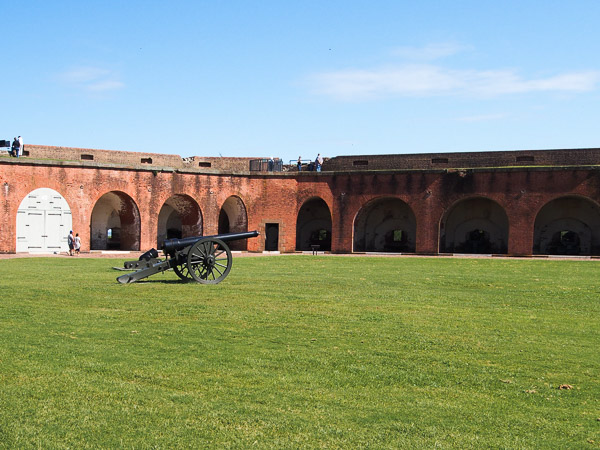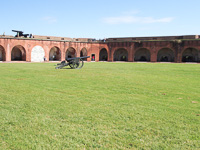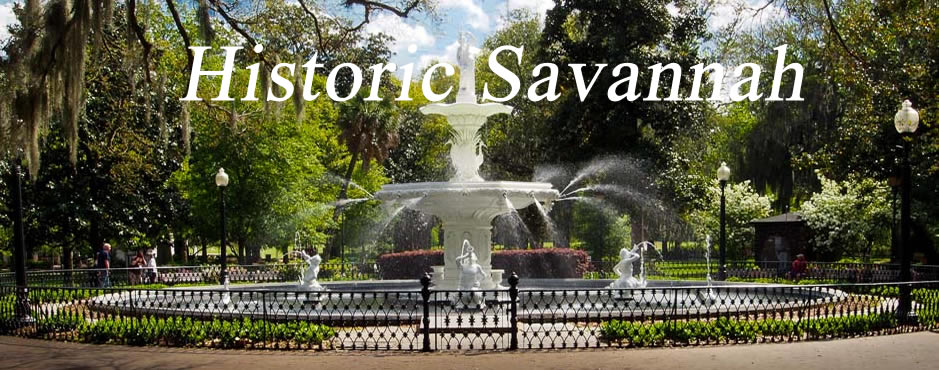 Fort Pulaski
Fort Pulaski
Fort Pulaski
 Fort Pulaski
Fort Pulaski
Fort Pulaski
Savannah, GA 31401
Hours:
Daily 8:30a - 5:15p
Hours may be extended in summer.
A massive five-sided edifice, Fort Pulaski was constructed in the 1830s and 1840s on Cockspur Island at the mouth of the Savannah River to protect the city of Savannah from naval attack.
Following the War of 1812, U.S. President James Madison ordered a new system of coastal fortifications to protect the United States against foreign invasion. Construction of a fort to protect the port of Savannah began in 1829 and was named for Count Casimir Pulaski, a Polish immigrant who fought during the American Revolution.
Wooden pilings were sunk up to 70 feet into the mud to support an estimated 25,000,000 bricks. Walls were eleven feet thick, thought to be impenetrable except by only the largest land artillery, which at the time were smooth bore cannons. These cannons had a range of about a half mile, and the nearest land (Tybee island) was much further away.
Fort Pulaski was finally completed in 1847 following eighteen years of construction and nearly $1 million in construction costs. It was assumed that the Fort would be invincible to enemy attack
By December 1861, Tybee Island was thought to be too isolated and unprepared for conflict and was abandoned by Confederate forces. This allowed Union troops to gain a foothold across the Savannah River from Fort Pulaski. Union forces under Quincy A. Gillmore began construction of batteries along the beaches of Tybee.
 On April 11, 1862, the Union bombardment opened two thirty-foot holes in the southeast face of Fort Pulaski. In less than thirty-six hours the Union's new rifled cannon had brought the surrender of a fort. Soon, more shells were passing through the wall and striking the interior of the fort. Olmstead decided to surrender the garrison when the firing came perilously close to one of the main powder magazines. In less than thirty-six hours and with the loss of only one Union soldier, the new rifled cannons had brought the surrender of a fort that took eighteen years to build—a fort that some of the best engineers in both armies had said could not be reduced by such an artillery assault.
On April 11, 1862, the Union bombardment opened two thirty-foot holes in the southeast face of Fort Pulaski. In less than thirty-six hours the Union's new rifled cannon had brought the surrender of a fort. Soon, more shells were passing through the wall and striking the interior of the fort. Olmstead decided to surrender the garrison when the firing came perilously close to one of the main powder magazines. In less than thirty-six hours and with the loss of only one Union soldier, the new rifled cannons had brought the surrender of a fort that took eighteen years to build—a fort that some of the best engineers in both armies had said could not be reduced by such an artillery assault.
Pulaski remained virtually abandoned until 1924, when the government designated it a national monument. Nine years later it became a unit of the National Park Service, which continues to maintain it.
Fort Pulaski was opened to the public for a short time before the beginning of World War II. This war would see further use of Cockspur Island as a section base for the U.S. Navy. Following World War II, Fort Pulaski reverted to the Park Service's control and it was administratively listed on the National Register of Historic Places on October 15, 1966.
HOURS: Open everyday except Christmas Day, 8:30a until 5:15p. Hours may be extended in summer. Call for information (912) 786-5787.


